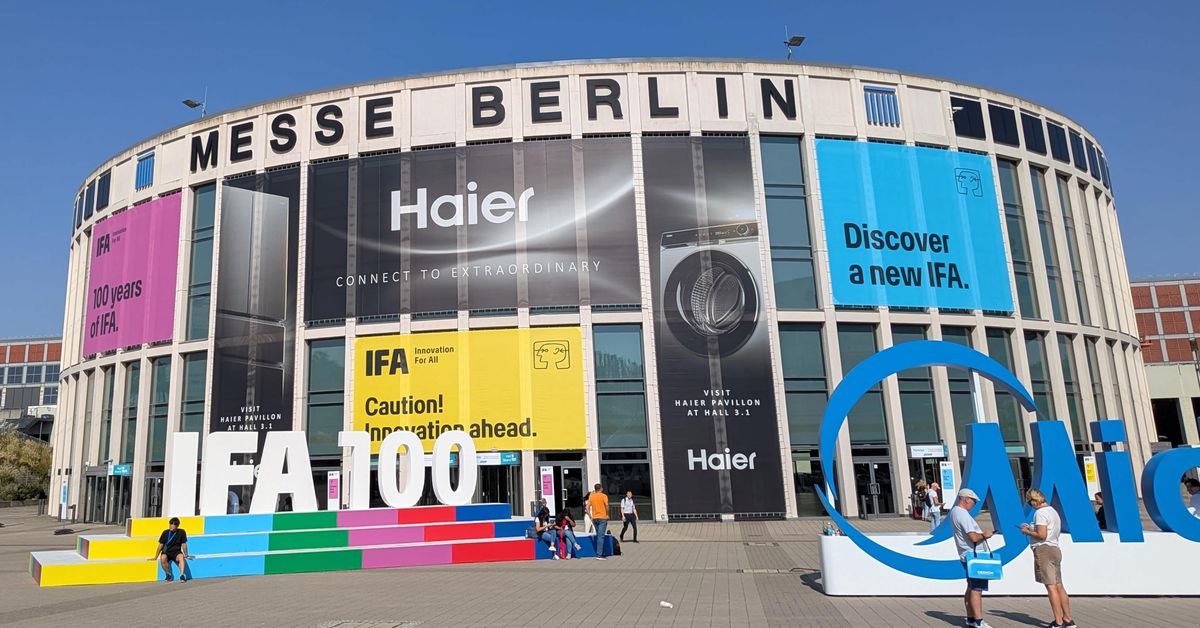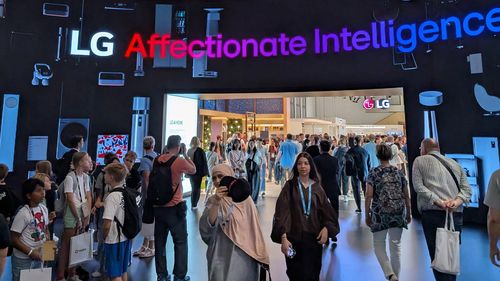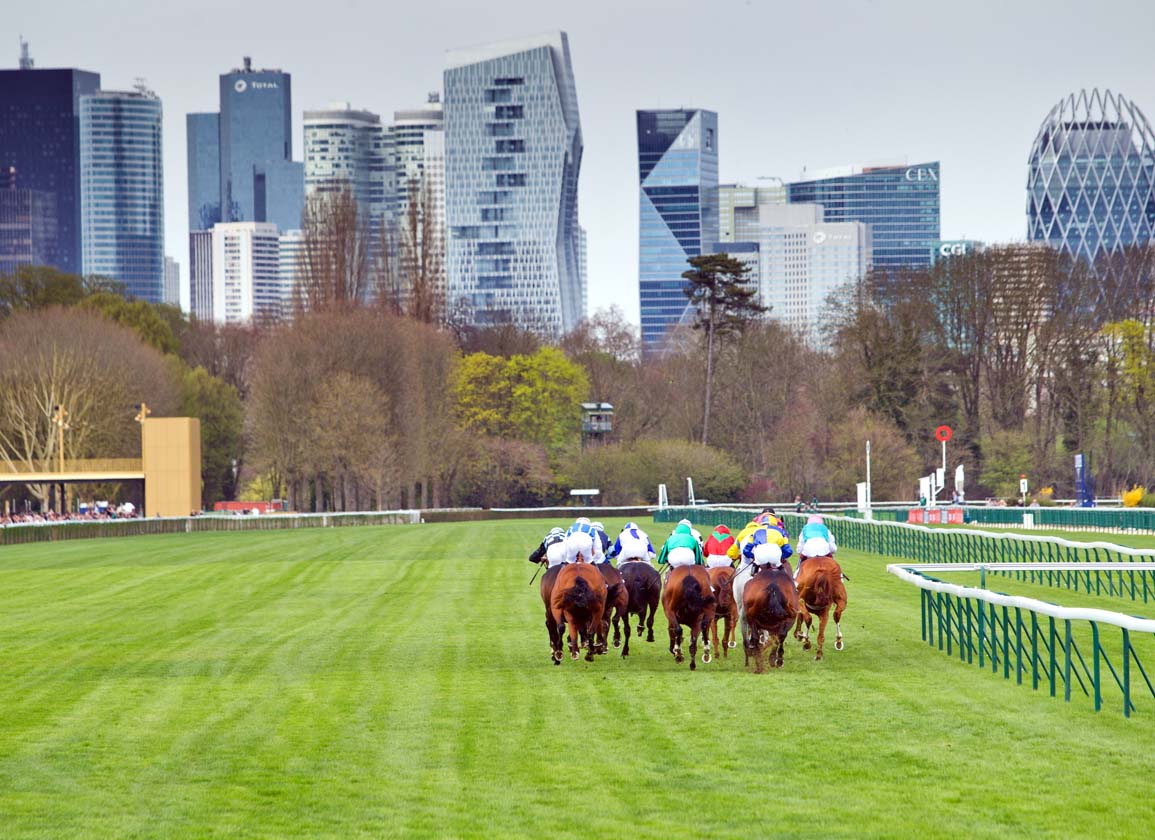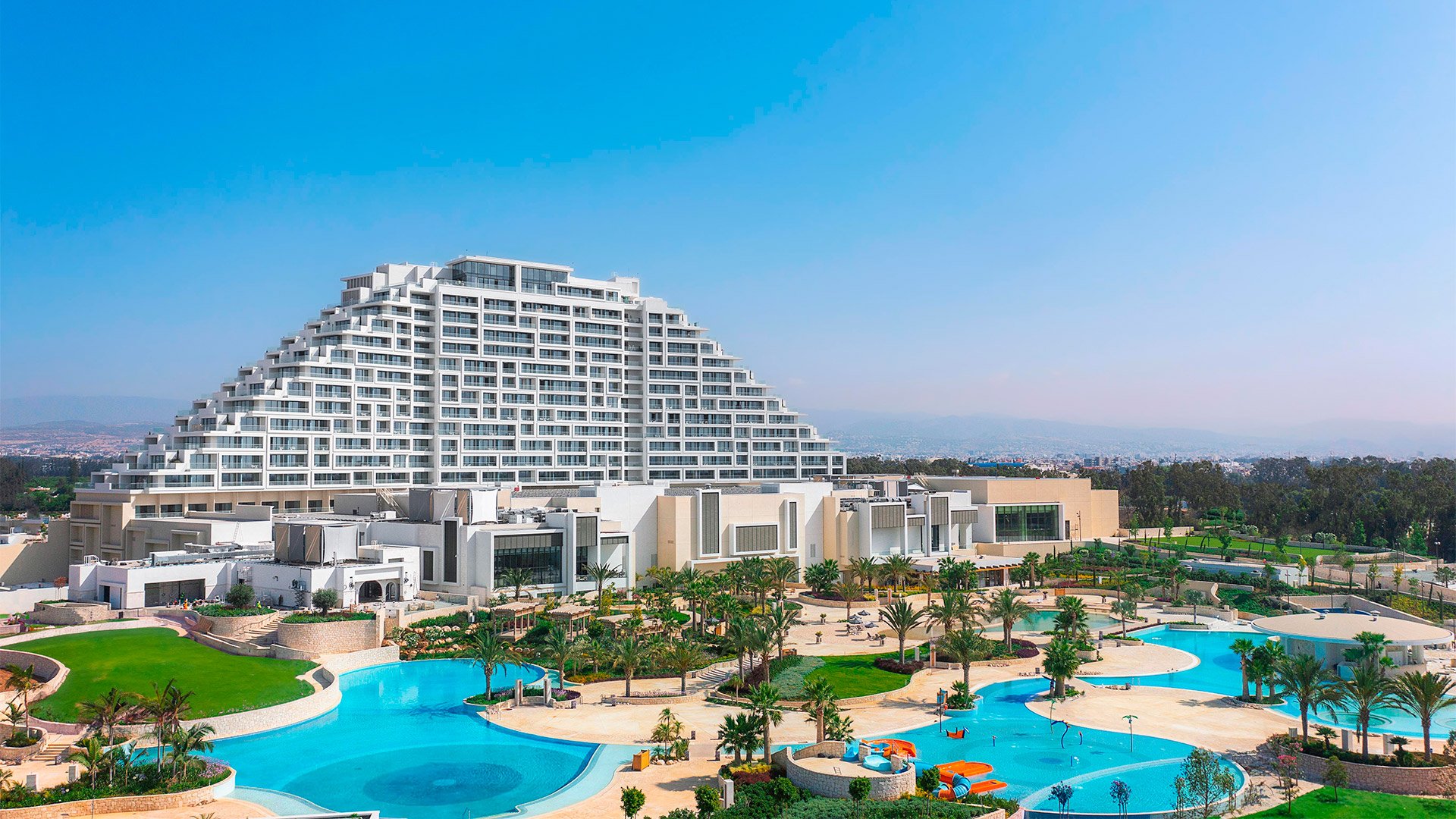Tech
Smart home and AI all the rage at Europe’s biggest tech show in Berlin

If 2023 was the year that AI broke through with ChatGPT taking the headlines, then 2024 is the year AI goes mainstream with every smartphone now packing some form of AI and here in Berlin let me tell you, your next fridge, washing machine and TV will all have AI on board.
Samsung kicked off the annual event with a demonstration of a range of their most recent technologies, but the highlight was their use of AI to not only upscale an old film recording of Albert Einstein speaking at IFA in 1930 – but also use AI to enhance the audio.
Upscaling of video is to take a poor quality video image and make it look far better when presented on a large screen, instead of just stretching it to fit, AI is used to add detail and enhance the image for a larger screen.
It was quite possibly one of the best examples of AI upscaling I’ve seen.

Then the sound enhancement allowed for the background noise captured by a now almost 100-year-old microphone to be eliminated and Einstein’s voice enhanced as if he was being recorded in a studio like environment.
A gimmick for sure at a press conference, but an example of how TV’s today need to be able to do such things in real-time with whatever content we choose to watch.
If we bring up a poor quality YouTube clip or an older TV show or movie on a huge 75 inch TV or even bigger, without smart and powerful processing it would look terrible.

Both Samsung and LG along with pretty much all major brands have this technology, but how one does it slightly better than the other is for us to work out.
In my experience, Samsung has been investing in this now for many many years and most likely has the best capabilities on the market today.
But outside of your TV picture and sound, the use of the term AI was scattered all around the areas of the home on display.
Your laundry appliances using AI to not just detect the fabric but program a wash cycle to suit that load, the size, and even your own personal needs based on that appliance’s knowledge of perhaps your schedule, or even what time dinner would be ready.
There’s a sense that all these devices need to work together – again, not a new idea, but it seems – at least to my simple eyes – that AI is the tool that will enable many of the smart home concepts we’ve dreamt of, or been told about.
LG took the trouble to not show specific products as a feature, but instead group ideas and products into zones that demonstrate just how AI – which they strangely labelled “Affectionate Intelligence” – in an attempt to make the technology more human and personal.
They demonstrated for example a zone called “Second Youth” essentially targeting the elderly with technology like a robot ironing board, robot vacuum and other smart technology to not just make their lives easier, but to extend their time living at home.
There is a vast ecosystem of connected products which can now work more easily together.
The challenge for companies like LG and Samsung is to make them accessible through the technology we love most or use most, and that is likely to be our TVs, our phones, or in Samsung’s case even using their Bixby voice assistant on a smart Fridge to control our smart home.
I spoke exclusively to Samsung’s head of Lifestyle product Mr Wonki Kim about their recent range of TV products which break the traditional concept of a TV.
Their “The Frame” or “Serif” TVs along with Freestyle and Premiere projectors offer a vastly different choice for consumers.
This year Samsung introduced two new short-throw projectors, and I asked Mr Kim just how that market was going given the pressures on the economy today.
He told 9News “my team, everyone in Samsung is really proud of what we have done with the Frame. And we see competition coming, I think in the Australia market as well. And we are very happy that other manufacturers understood what we were trying to do.
“We’ve been growing the frame market globally since the launch in 2017, and it has grown every year. This year as well, even with a lot of tough economical conditions and constraints on consumer purchasing power – Frame always grows. And with the competition, I think it will grow even more because there’ll be more awareness of this kind of product category.”
Always the tease from people on the inside of these tech companies, Wonki Kim says there’s more to come “we have big plans for next year as well. think yeah, you’ll see a lot of new things coming next year.”
But it’s not always immediate success for a company like Samsung, despite being the global leader in TVs, in the projector space, there are many other brands.
In Australia that market has a strong product range from competitor Hisense, and Wonki Kim knows the company has a lot to learn, saying “I think in the Premiere and The Freestyle (Projectors), we are still learning a lot. I think we are very strong in the TV category or all the other categories that we have. We have established, but the projector category, we’re still learning. We are learning about ourselves, but we are learning about how consumers are engaging with the product.”
“And I think it will take a little bit more time for us internally to be very satisfied of what we are sending it out to the market. But we are in a stage of learning how people are interacting because people who are using this products are quite new to the product.”
Just like Samsung engineers working on their own amazing products, at a tech show like IFA there’s always something outrageous, big and out of this world to make us realise our own TV or gadget may never be good enough.
This year, it was probably the 163inch Hisense MicroLED TV which – frankly was enormous, and – I want one.
Trevor Long travelled to Berlin with support in part from Samsung and LG.










